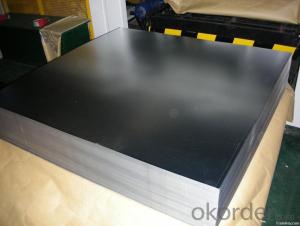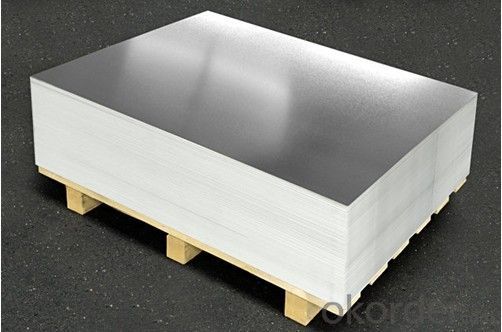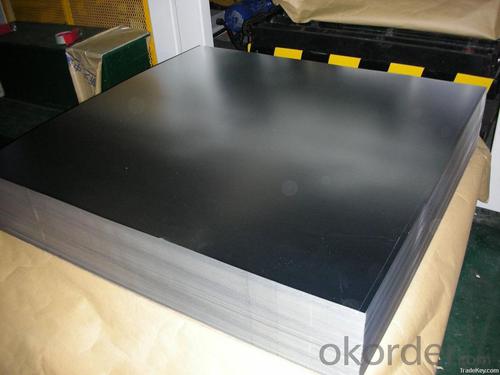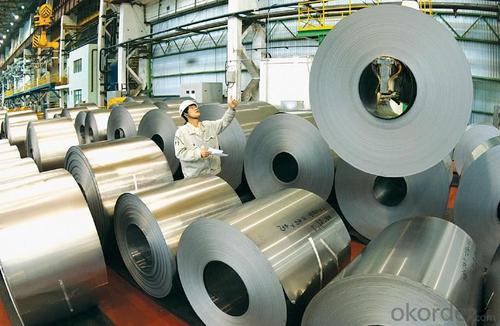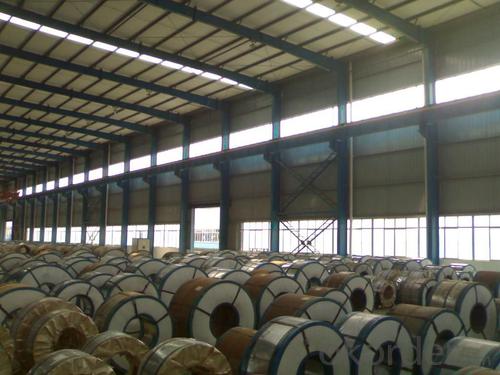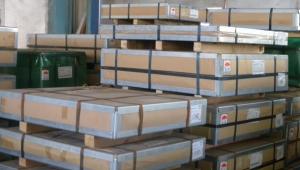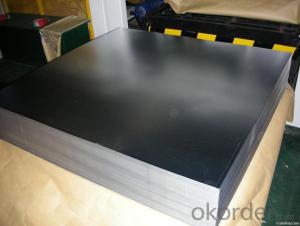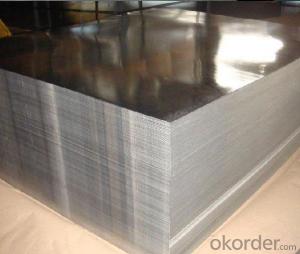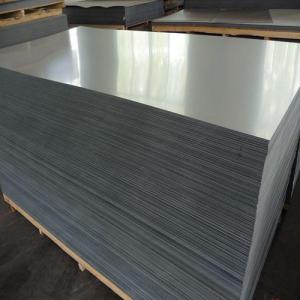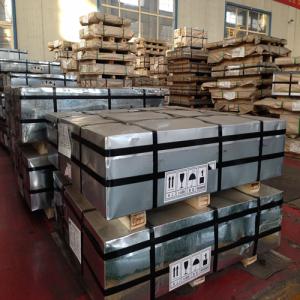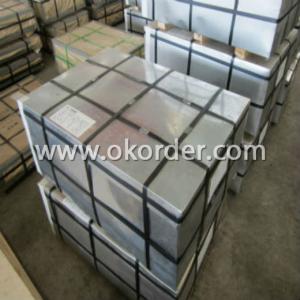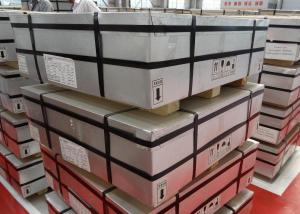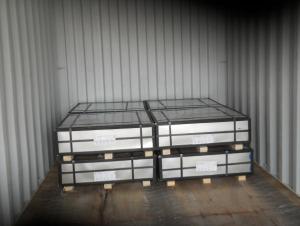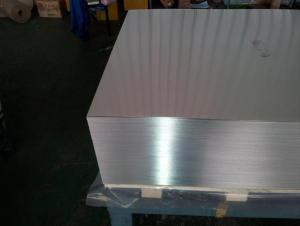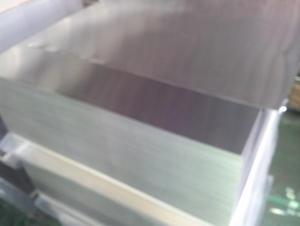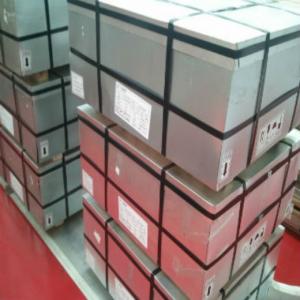Electrolytic Tin Plate Coils and Sheets for Foods Metal Packaging
- Loading Port:
- Tianjin
- Payment Terms:
- TT OR LC
- Min Order Qty:
- 25 m.t
- Supply Capability:
- 7000 m.t/month
OKorder Service Pledge
OKorder Financial Service
You Might Also Like
1.Structure of Electrolytic Tin Plate Coils and Sheets for Foods Metal Packaging Description
Electrolytic Tin Plate Coils and Sheets for Foods Metal Packaging, is one thin steel sheet with a coating of tin applied by electrolytic deposition. Tinplate made by this process is essentially a sandwich in which the central core is strip steel. This core is cleaned in a pickling solution and then fed through tanks containing electrolyte, where tin is deposited on both sides. As the strip passes between high-frequency electric induction coils, it is heated so that the tin coating melts and flows to form a lustrous coat.
2.Main Features of the Electrolytic Tin Plate Coils and Sheets for Foods Metal Packaging
Appearance – Electrolytic Tin Plate is characterized by its beautiful metallic luster. Products with various kinds of surface roughness are produced by selecting the surface finish of the substrate steel sheet.
Paintability and printability – Electrolytic Tin Plates have excellent paintability and printability. Printing is beautifully finished using various lacquers and inks.
Formability and strength – Electrolytic Tin Plates have got very good formability and strength. By selecting a proper temper grade, appropriate formability is obtained for different applications as well as the required strength after forming.
Corrosion resistance – Tinplate has got good corrosion resistance. By selecting a proper coating weight, appropriate corrosion resistance is obtained against container contents. Coated items should meet 24 hour 5 % salt spray requirement.
Solderability and weldability – Electrolytic Tin Plates can be joined both by soldering or welding. These properties of tinplate are used for making various types of cans.
Hygienic – Tin coating provides good and non toxic barrier properties to protect food products from impurities, bacteria, moisture, light and odours.
Safe – Tinplate being low weight and high strength makes food cans easy to ship and transport.
Eco friendly – Tinplate offers 100 % recyclability.
Tin is not good for low temperature applications since it changes structure and loses adhesion when exposed to temperatures below – 40 deg C.
3.Electrolytic Tin Plate Coils and Sheets for Foods Metal Packaging Images
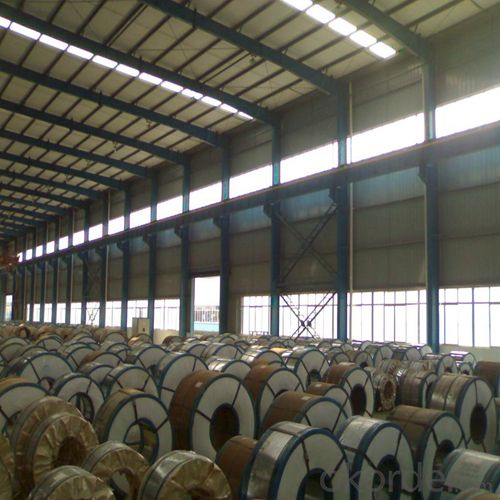
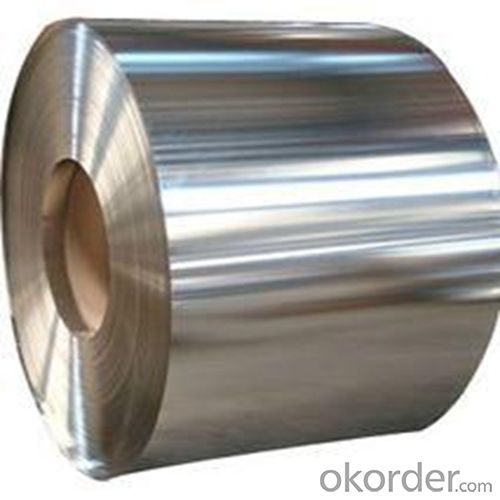
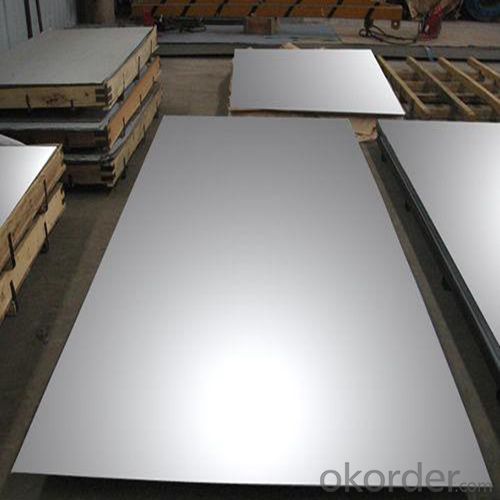
4.Electrolytic Tin Plate Coils and Sheets for Foods Metal Packaging Specification
Standard | ISO 11949 -1995, GB/T2520-2000,JIS G3303,ASTM A623, BS EN 10202
|
Material | MR,SPCC |
Thickness | 0.15mm - 0.50mm |
Width | 600mm -1150mm |
Temper | T1-T5 |
Annealing | BA & CA |
Coil Inner Diameter | 508mm |
Weight | 6-10 tons/coil 1~1.7 tons/sheets bundle |
Passivation | 311 |
Oil | DOS |
Surface | Finish,bright,stone,matte,silver |
5.FAQ of Electrolytic Tin Plate Coils and Sheets for Foods Metal Packaging
- How are the Electrolytic Tin Plates specified?
The Electrolytic Tin Plates are specified as per the steel base, extent of tempering, the coating weight, annealing method and the surface finish.
- How many types there are for base steels?
The base steels are of three types: Type MR, L, D
- Q: What are the typical dimensions of tinplate sheets?
- The typical dimensions of tinplate sheets can vary, but they are commonly available in sizes ranging from 0.15mm to 0.35mm in thickness, with widths of 600mm to 1200mm, and lengths ranging from 800mm to 2400mm.
- Q: How does tinplate compare to paperboard in terms of packaging applications?
- Tinplate and paperboard have different characteristics that make them suitable for different packaging applications. Tinplate is a durable and corrosion-resistant material that is commonly used for packaging products that require protection from moisture, air, and light, such as canned food and beverages. It offers excellent barrier properties and can be easily shaped into various forms, making it ideal for products that require a tight seal. On the other hand, paperboard is a versatile and cost-effective option for packaging applications. It is lightweight, recyclable, and biodegradable, making it environmentally friendly. Paperboard is commonly used for packaging dry goods, such as cereal boxes, cosmetics, and pharmaceuticals. It provides good printing capabilities, allowing for attractive and informative designs. In summary, tinplate is preferred for products that require strong protection and preservation, while paperboard is suitable for lightweight products that benefit from eco-friendly packaging options. The choice between the two materials depends on the specific needs of the product and its target market.
- Q: Can tinplate be used for roofing and construction?
- Yes, tinplate can be used for roofing and construction. Tinplate is a thin, durable steel sheet coated with a layer of tin, which provides corrosion resistance and enhances its strength. This makes it suitable for various applications in the construction industry, including roofing, siding, and cladding. Tinplate's ability to withstand harsh weather conditions, its aesthetic appeal, and its cost-effectiveness make it a popular choice for roofing and construction projects.
- Q: How to test the tightness of tin metal cans?
- A careful observation of empty tank tank bottom edge and welding seam has no air bubbles, where the same parts of continuous bubbles, should be judged as leakage, leakage of the recording time and vacuum degree, and make a mark in the leak site.
- Q: Can tinplate packaging be used for promotional items?
- Yes, tinplate packaging can be used for promotional items. Tinplate packaging offers a durable and visually appealing option, making it suitable for promotional purposes. It can be customized with branding and designs, making it an effective tool to enhance brand visibility and create a lasting impression among recipients.
- Q: What are the common decorative options for tinplate packaging?
- Some common decorative options for tinplate packaging include embossing, lithography, and spot varnishing. Embossing involves creating raised designs on the surface of the tinplate, adding texture and visual interest. Lithography is a printing technique that allows for vibrant colors and intricate designs to be applied to the tinplate. Spot varnishing is a method of selectively applying a glossy finish to certain areas of the packaging, creating a contrasting effect. These decorative options can enhance the overall aesthetic appeal of tinplate packaging and make it more visually appealing to consumers.
- Q: What are the main uses of tinplate?
- Tinplate is primarily used for packaging and canning purposes due to its excellent corrosion resistance and ability to maintain the quality and freshness of food products. It is also utilized in the production of metal containers, aerosol cans, bottle caps, and various household items. Additionally, tinplate finds applications in the manufacturing of electrical components, such as transformers and capacitors, as well as in the construction industry for roofing and cladding purposes.
- Q: Can tinplate packaging be used for non-food items?
- Yes, tinplate packaging can be used for non-food items. Tinplate packaging is a versatile and durable material that can be used for various purposes including packaging non-food items such as cosmetics, pharmaceuticals, household products, and more. Its protective properties make it suitable for a wide range of products that require stability, durability, and visual appeal.
- Q: How does tinplate affect the cost of packaging?
- Tinplate can affect the cost of packaging by increasing it due to the higher price of tin compared to other materials. However, it also offers several advantages such as durability, extended shelf life, and enhanced product protection, which can justify the higher cost for certain applications.
- Q: How does tinplate affect the overall weight of packaging?
- Tinplate tends to increase the overall weight of packaging due to its heavier density compared to other materials commonly used for packaging.
Send your message to us
Electrolytic Tin Plate Coils and Sheets for Foods Metal Packaging
- Loading Port:
- Tianjin
- Payment Terms:
- TT OR LC
- Min Order Qty:
- 25 m.t
- Supply Capability:
- 7000 m.t/month
OKorder Service Pledge
OKorder Financial Service
Similar products
Hot products
Hot Searches
Related keywords

